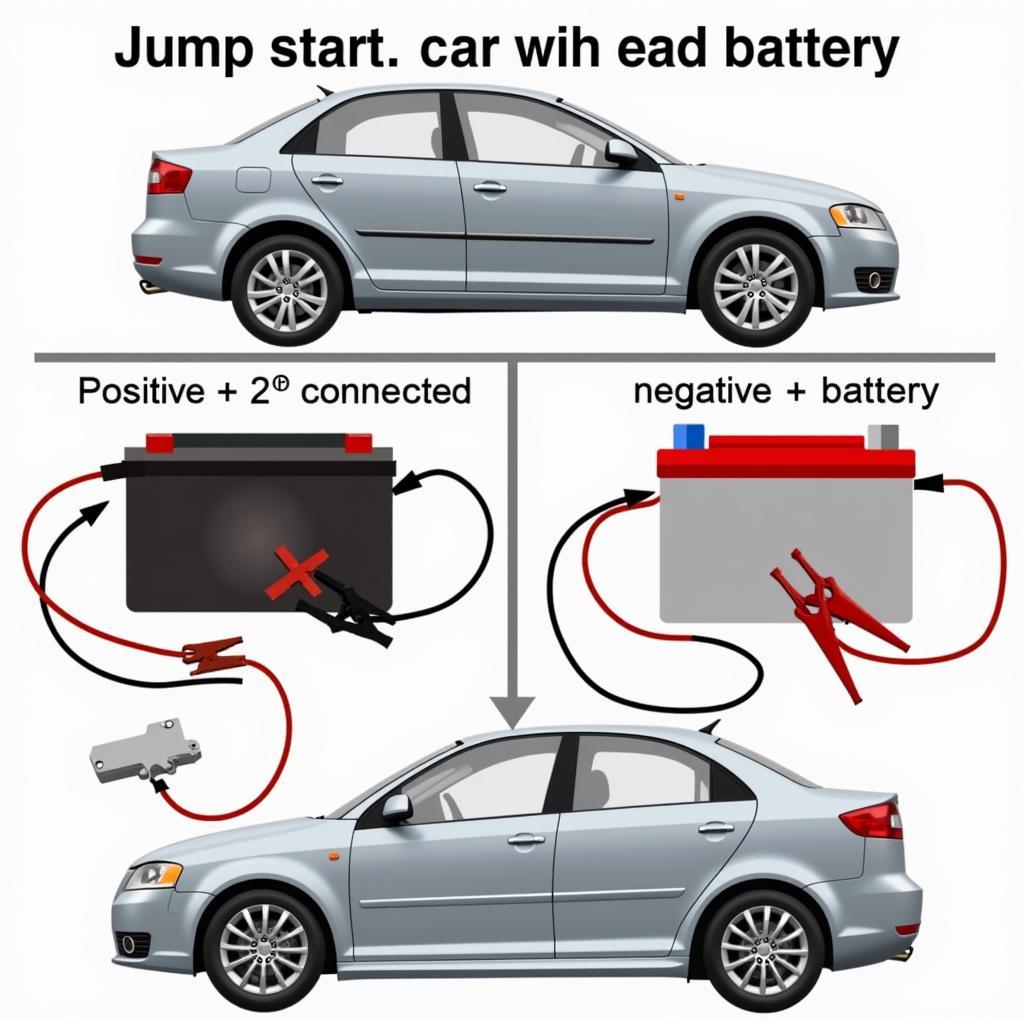A dead key fob can be incredibly frustrating, leaving you stranded and unable to unlock or start your car. This often happens unexpectedly, turning a normal day into a scramble for a solution.
Common Reasons Your Key Fob is Dead
There are several reasons why your key fob might have stopped working. Identifying the root cause can help determine the best course of action for getting back on the road.
Dead Key Fob Battery
This is the most common culprit behind a non-responsive key fob. Like any other battery-powered device, key fobs have a limited lifespan. Over time, the battery drains, ultimately failing to power the fob’s functions.
“The first thing to check when your key fob is dead is the battery,” advises John Smith, Senior Automotive Electrician at XYZ Auto. “It’s a simple fix that can save you time and money.”
Key Fob Programming Issues
While less common, your key fob might have lost its programming, preventing it from communicating with your car. This can occur due to various reasons, including:
- Physical damage to the key fob: Impact or water damage can disrupt the fob’s internal components, affecting its programming.
- Interference from other electronic devices: Strong electromagnetic signals can interfere with the key fob’s signal, leading to communication errors.
- Low car battery: A weak car battery can sometimes disrupt the synchronization between the key fob and the vehicle’s system.
Other Potential Issues
Beyond battery and programming issues, there are a few other possibilities to consider:
- Faulty key fob receiver in the car: The receiver in your car might be malfunctioning, preventing it from detecting the signal from your key fob.
- Internal key fob damage: Internal components of the key fob could be damaged, rendering it inoperable.
Troubleshooting a Dead Key Fob
Before assuming the worst, there are several troubleshooting steps you can try to revive your key fob.
1. Replace the Key Fob Battery
This is the easiest and often the most effective solution. You can usually find replacement batteries at your local auto parts store or online. Refer to your owner’s manual or search online for your car model and “key fob battery replacement” to find the correct type and replacement instructions.
2. Try the Spare Key Fob
If you have a spare key fob, try using it to unlock and start your car. If the spare fob works, it’s highly likely the issue lies with your primary key fob and not the car’s system.
3. Check Your Car Battery
If replacing the key fob battery doesn’t work, ensure your car battery is charged. A drained car battery can cause various electrical issues, including key fob malfunction. You can jump-start your car to rule out this possibility. Refer to our guide on drained battery car won’t start for detailed instructions.
4. Reprogram the Key Fob
If you suspect a programming issue, you can try reprogramming the key fob yourself. However, this process can vary significantly depending on your car make and model. Consult your owner’s manual or search online for model-specific instructions. You can also contact a dealership or an automotive locksmith for professional reprogramming.
5. Inspect the Key Fob for Damage
Carefully examine your key fob for any signs of physical damage, such as cracks, water damage, or loose buttons. If you notice any damage, it’s best to consult a professional or contact your dealership for a replacement.
6. Contact a Professional
If none of the above steps work, it’s best to seek help from a qualified automotive locksmith or your dealership. They have the expertise and tools to diagnose and repair more complex key fob issues, such as a faulty receiver in the car or internal damage to the key fob.
“While some key fob issues are easily solvable, others require specialized knowledge,” says Jane Doe, an experienced Automotive Locksmith. “Don’t hesitate to seek professional help if you’re unsure about any procedure or if the problem persists.”
Preventing Future Key Fob Issues
While not all key fob problems are preventable, some proactive measures can minimize the risk of encountering this frustrating situation again:
- Regularly replace the key fob battery: Don’t wait for it to die completely. Consider replacing it every 2-3 years as a preventative measure.
- Keep your key fob dry and protected: Avoid exposing it to extreme temperatures, water, or physical impact.
- Store your key fob away from electronic devices: This can help minimize the risk of signal interference.
- Address car battery issues promptly: A weak or dying car battery can lead to various electrical problems, including key fob malfunction. Learn more about identifying car battery problems with our resource on do i need a new alternator or battery.
A dead key fob can be a nuisance, but understanding the potential causes and troubleshooting options can help you get back on the road quickly. Remember to prioritize simple solutions like battery replacement and consider seeking professional help when needed.

